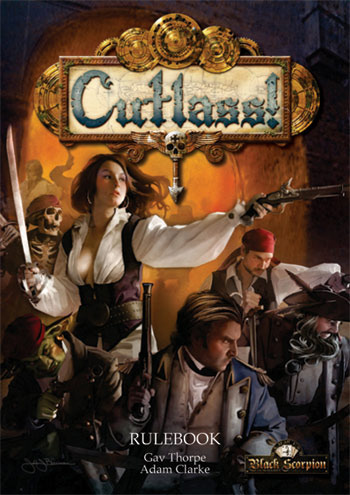Gav Thorpe's Blog, page 42
May 10, 2011
The Big Mo
I have been a terrible blogger of late, so it is with profuse apologies for my recent absence that I must begin. This is due to a number of reasons, none of which are terribly interesting, but revolve around work, a long holiday decorating and gardening with my girlfriend, and general slackness…
Yet I also have a good reason for my tardiness in posting a new article, which is the subject of this post: momentum.
Being a full-time writer is just that – writing all day, five or six days a week. It is a luxury most folks cannot enjoy, what with having day jobs and whatnot to fill up their time. It does come with a downside though, and that is the matter of sustaining the workflow. For some writers workflow is simply about what commissioned work they have in the pipeline and as any freelancer will tell you, there is rarely such a thing as too much work. However, with lots of work to do, one has to be careful to pace oneself properly or risk burning out. I am in the fortunate position of having plenty of work to do, and quite a lot lined up for the future. This schedule is somewhat compromised by an extended holiday I am planning later in the year, which will eat up the best part of a month and a considerable chunk of my finances, so in a way I am 'front-loading' my work for the year to ensure I have both time and money for my New Zealand trip.
Head Space and Typing Time
In order to ensure that I am not caught short on either the time or money front, I have recently begun to plan my work in a bit more detail than before, using a spreadsheet. One important part of the scheduling has been to include time for 'planning' – coming up with a writing synopses for future projects. Despite this, it is very hard some times to concentrate on the work at hand knowing that an upcoming project hasn't been properly planned yet, and the temptation is to spend a little time on that now rather than later.
To counteract that, I have been making sure that my 'writing' time of late is focussed solely on typing time – actually sitting at a keyboard and writing words in the novel. I have a daily target to reach, calculated quite easily by dividing the amount left to be written by the number of days left to write it.
So far, so straightforward.
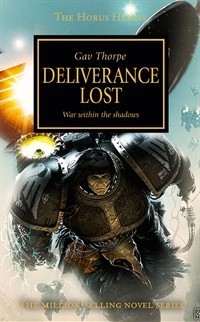
Corax about to 'Bring It'
Issues have come from taking a break at the halfway point of my latest novel. Quite a long break – over a week – in which I have not been thinking about writing at all. Getting back on the horse and picking up where I left off has taken a few days, which has obviously impacted on the schedule. So it is that for the past week and a half I have been avoiding any and all distractions – like blog posts – in order to get back up to speed on Deliverance Lost. It has been especially tricky with this project, my first Horus Heresy novel, because it has quite an involved plot and has to cover a lot of ground in the space available. Word count wise it is still going nicely, but my worry is that the 'dawdling' I've done in recent days might well show through in slow narrative.
I am resisting the urge to go back and edit it already. I have a principle that the first draft gets written without too much re-reading, otherwise I could end up revising the same few thousand words over and over and never finish. This is a problem I hear from writers who are just starting out.
Keep on Truckin'
When I get into the groove, the writing comes smoothly. Thankfully I am back in that happy place with the novel. For those who are still learning about their own process, it might be worth bearing in mind the importance of momentum. Remember that there will be time to re-write and revise later – if you get the first draft finished. If something occurs to me – a scene that should be inserted or a lingering doubt about something I have written previously, I insert a note into the manuscript [like this]. This means that I don't interrupt my general flow by going back and making the changes there and then, but ensures that when I do my first read-through, I won't forget what it was that had occurred to me.
I may even make such a note in the section I am currently writing, if I get a little stuck but want to carry on. For example, you may want to end a chapter on a pithy line of dialogue, or open with an awesome description of the setting, but the words aren't coming cleanly at the time. [Write a note] about it and get on with the narrative, coming back to the problem sentences later on, maybe even leaving them until the second draft. There is nothing worse than letting a line or two bog down your work for an hour or more, when whatever you come up with probably won't survive the first rewrite anyway.
Always bear in mind that your first draft is rough. There will be typos, spelling errors and some bad prose. Do not fret about it, but make sure you get the narrative finished. When all the words are there, and the story is complete, then you can concentrate on making the delivery as polished as possible.
P.S. The tagline on the cover 'War within the shadows' is a cutnpaste, not the final one…








April 15, 2011
Arr, Me Hearties!
As I've said in several interviews, when I left the GW Design Studio, I swapped a day job of games design and spare-time fiction writing for full-time writing and spare-time games design. The first of my efforts is soon to see the light of day, and I'm very excited about this.
The Cutlass! rules allow players to collect a band of fighters and battle for control of a strange island in the Carribean. These are fantasy pirates, so as well as Pirates, Privateers and Royal Navy gangs you can also opt for Orcs and Goblins, Dwarfs, Undead and Elves. You can find out more at the Black Scorpion website so I won't repeat that here. Instead I'm going to write a bit about how the game came into being and how I set about designing the core rules.
How it Happened
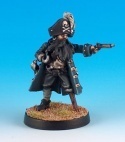
Black Jack Davey
Last year I went with a friend to a wargames show – Triples in Sheffield, I think, but I might be mistaken. Amongst all the lovely wargaming goodness, Carl and I found Adam Clarke at his Black Scorpion stand late in the day. I had been determined to purchase some terrain for another rules set I am working on, but had failed miserably to find anything I liked, so I had some money burning a hole in my pocket. Seeing Adam's miniatures in the flesh stirred old 'gotta have them' feelings, so Carl and I exchanged a look and pretty much decided on the spot that some fantasy pirate fun was to be had.
Wind forwards a few months, and I was delighted to be contacted by Adam, who was looking for someone to pen a set of rules to accompany his lovely miniatures. I was up for it, as they say, and after Adam outlined roughly what he was looking for, I set to scribbling down some ideas, pushing some soldiers around on the dining table and rolling dice to see if the basic system I had in mind would work.
Objectives
A warbands-level game, allowing for forces of between 10 and 30 (ish) models.
Basic rules that can be developed for different settings – mix of close combat and ranged fire tactics to cope with expansions into pirates and cowboys initially.
Dining table-sized playing area.
Fastplay rules, allowing for lunchtime gaming or several games in a session.
Campaign play and options for creating 'off the peg' experienced warbands for pick-up play.
Easily expandable for new miniatures releases.
The Main Rules
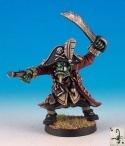
Orc Admiral
This was the bullet point brief, and though a few things have morphed a little bit (the standard table is 4′ x 4′ now, small enough to put a board on a dining table) I've pretty much stuck to this. My primary goal was to design a system that allowed the players to interact throughout play, rather than having to wait out their opponent's turn. Initially I included a lot of opposed dice rolls (that is, both players roll against each other to determine success or failure of an action) but this proved a bit too cumbersome for more than a handful of models, so I streamlined my ideas a little bit after the first few solitary test sessions (yes, I started out playing with myself…).
Something else I had said in my proposal summed up what I was trying to achieve.
I see this as providing a game that recreates the swirling, sometimes anarchic combat of a pirate raid or gunfight. Rather than players simply taking turns to resolve their actions, the system will include a flowing 'reaction' dynamic that allows the players to respond to and interrupt their opponents, allowing the fight to ebb and flow from one side to the other.
I've always been a keen fan of Jervis Johnson's Blood Bowl rules, and one of the major features in that system is the 'Turnover' rule, which means if one of your team makes a mess of things, your turn ends and your opponent's turn starts. The Turnover idea has stuck in my head as one of the best things a games system can have, because it makes players face tough decisions and really rewards proper planning but also allows risk-taking.
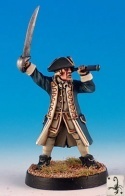
Navy Captain
As I'm sure most games designers do, I am constantly thinking up neat little mechanics and systems, making notes about them and then putting them to one side until they find an appropriate venue. One such system had been bugging me for the last couple of years, and Cutlass! seemed a great place to bring it into being. The central game revolves around using different dice to represent the skills of the fighters on the tabletop. This ties in with the opposed dice rolls idea, so while a rookie might only have a four-sided die to roll, a veteran warrior might roll an eight-sided die for the same test. To even things out a little, I made these dice rolls 'open-ended', which means if a player scores the highest possible result (a 4 on a four-sided die, for example) they can roll again and add the next score on to the total. This creates some interesting dynamics, maths-wise, because a die with more sides can score higher on a single roll but has less probability of scoring the maximum result. This serves to smooth out the differences between the skill levels and I think works rather well.
Encounters
As well as the nuts and bolts of running around and fighting, Adam was very much inspired by other skirmish-level games that allow the players to run a campaign, linking their games together so that their fighter suffer injuries, get better, earn new skills and so on. As part of this, I was tasked with designing the scenario and campaign systems. From my proposal:
Games will be scenario-based, with each side having its own objectives to achieve. Rather than players being thrown into a random situation, each will choose what they want to do and the resultant match of objectives forms the scenario. The players will then have to form their tactics around achieving their goals whilst hampering the enemy.The scenarios will have a narrative dynamic. That's to say, the achievement of objectives will be more important than simply killing the enemy. These will include searching for loot, kidnapping or rescuing an individual, attacking an enemy camp, pursuits and ambushes and so on.
I was very much of the mind to let the miniatures be a vehicle for telling a story, and so the Encounters I've devised provide a framework for how the battling gangs are set up, and what they are fighting for, but leave lots of room for the players to add their own narrative.
These scenarios will be created without any setting detail, which can be layered on later. For example, in one setting the 'loot' scenario might be raiding a coastal village and in another a bank robbery. One of the scenarios will definitely be a bar brawl of some kind…
Campaigns
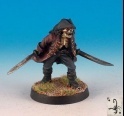
Undead Captain
For the campaign, I was very keen to include lot of the usual stuff: injuries, experience, new equipment. To provide some wrinkles, there is a recruitment system that offers up random new additions to the gang; rather than simply spend money or points on getting who they want, the pllayer (as leadr of the gang) has to pick and choose from those who offer their services between each Encounter. On top of new members and weapons, the players can also upgrade their gang hideout or barracks, giving them something other than just fighters to spend their their loot on.
This harked back to memories of the Design Studio Necromunda campaign many years ago, which culminated in an alliance of gangs taking on the might of Andy Chambers' Dog Soldiers in an assault on their Underhive lair. It was great fun to play and has stuck with me, so when I devised the Cutlass! campaign system, I wanted something with a similar feel. For this reason, there are opportunities to raid each other's hideouts, either just for the giggles and swag, or to rescue prisoners taken from your gang.
On top of that, some campaign systems have no obvious end point. The players keep playing and the gangs keep getting bigger and more powerful, until everyone decides to take a break. In Cutlass! there is more structure to the campaign endgame. When a gang gets to a certain size or fame/ infamy, it triggers 'The Final Reckoning'. This works like a knock-out tournament competition, whittling away the participants until two gangs remain to battle for control of the island. It gives the campaign more of a narrative and sense of direction, as players realise that they or someone else is close to the tipping point, maybe wanting to get a couple more games in to beef up their gang before the fight to the death starts!
Get Playing
So, nearly a year after drooling over Adam's gorgeous miniatures, I now have a set of rules we can use them with. If you want to find out more and stay up-to-date with the latest Cutlass! news, you can follow Black Scorpion and the Cutlass! game on Facebook.
Up for a game, Carl?

Pirate Girls
All images (c) Black Scorpion Miniatures.








March 11, 2011
Chasing the White Rabbit
Okay, not so much chasing as talking to…
On Weds night I was invited to meet a local book club – called the White Rabbit club after the cafe they usually use to hold their meetings. The introduction was via a friend of my girlfriend, so I didn't know quite what to expect, and I was somewhat intrigued/ anxious to find out what they thought of The Crown of the Blood, which they had chosen for their monthly read.
As I thought would be the case, the White Rabbiters were, aside from Ben the organiser, a group of nice middle-aged ladies, who had never read a fantasy book before. I waited with bated breath as each of them passed on their verdict. Would the violence put them off? The salty language? The strange setting?
Apparently not. The response was pretty much the same from all of them – they found it a bit odd for the first few pages, but persevered and once they got into the characters and story they found that they were carried along by the narrative.
Smiles all round.
The evening broke into two parts, with drinks and cake to ease our way through. We spent the first part talking about The Crown of the Blood, and then had a questions and answers session about being a writer and genre writing in general. I found the whole evening entertaining and informative, and they were a lovely group of people.
Most interesting was to hear their thoughts about reading a fantasy book, and what they had to say has given me plenty to think about. Those of us who are very familiar with genre writing/ reading take a lot of things for granted that they did not, and it was helpful to have a different perspective.
A repeated comment, echoing something that another non-fantasy reader had said to me previously, was the difficulty getting their heads around the names of the characters and places. I don't think The Crown of the Blood has particularly difficult names, but I do make use of a lot of double vowels – Ullsaard, Aalun, Maasra and so on. It occurs to me that reading fantasy and sci-fi is a bit like listening to different genres of music. It has been shown that we learn how to parse the information with experience, so for example someone who listens to lots of death metal can better decipher the shouty vocals, or a hip hop fan learns how to process fast-paced rapping. Readers of fantasy obviously have developed their own techniques for accommodating strange words and phrases without being broken from the flow. I wouldn't like to think how they would have fared with the outlandish Elven and Eldar names of some of my latest Black Library novels!
There was a bit of a split regarding the fantasy element. Some liked the fact that I have kept it very low key, while a couple of them were expecting something more fantastical, along the lines of The Lord of the Rings. The fact that neither seemed at all put off by characters riding around on giant cats and punching dinosaurs suggests to me that I achieved my aim of making it feel natural and everyday, and the fact that some of them were occasionally surprised when a fantasy element was introduced makes me feel that the world comes across as consistent and believable.
The other major talking point was the ending. Without giving away spoilers, the novel ends on an almighty cliffhanger. As a group they were used to reading single novels, and it again occurs to me that us genre veterans are adapted to books that are part of a series. I explained that the book was the first of a trilogy and suddenly it made more sense to them…
The evening continued with more general talk about being a writer, how the process worked, how I gather up my ideas and turn them into a narrative. They were a little surprised by my workload – three or four novels a year – and I explained the difference between being 'a writer' and being a 'career novelist'. Much of the questions were the same as I have fielded before, but once more genre innocence meant that I found myself talking a lot about fantasy writing in general, the different audiences it appeals to. It also threatened to raise the subject of what fantasy actually is, but as countless panels, seminars and blog posts have shown, that is ultimately impossible to define, so I neatly sidestepped that one!
I would like to say a big thanks to the White Rabbit book club for reading my novel and inviting me to talk about it. It was a very pleasant and different experience, and one that I hope to repeat at some time in the future. Following on from Black Library Live! the meeting reminded me how much I like talking about writing (and myself, obviously) and how refreshing it is to talk to fans and readers about their likes and dislikes. For a profession that usually involves sitting alone at a keyboard or with a notebook, these sorts of events allows us to get out and about and meet other people, which is always valuable.








March 7, 2011
A Whole Heap of Stuff
This weekend just past was Black Library Live! 2011, and I had a great time. BL Live! is a very rewarding day for me. Most importantly, it is always nice to spend time chatting with fans and signing books. This year I was in three seminars and had two signing sessions, so it was a busy event, but that's the way I like it.

Dark Angels Fun
First order of the day was the Space Marines Battles seminar, alongside fellow authors Aaron Dembski-Bowden, Chris Wraight, Nick Kyme, Andy Hoare and Rob Sanders, talking about the series. It was cool to hear how the other guys had approached the series, and I think it showed that even under the umbrella of Space Marine Battles, there are lots of different ways to present humanity's finest defenders.
Not only did the questions and discussion show that there are an awful lot of battles that could be covered, but there are also many ways that those stories could be told. In particular, one question was, "Which historical battle would you not want to write about?". This prompted some interesting debate amongst the authors, and the consensus emerged that perhaps some of the events from Warhammer 40,000 were just too big to fit into one novel. I highlighted the famous Battle for Macragge against the Tyranids as one that I would be wary of tackling, due not only to the amount of stuff already written about it in various places, but also the massive expectation that the readers would have.
As is the way of things, after the seminar I started thinking about all the different ways I would actually go about writing that battle… One of the best things about the series is the challenge of taking established events and portraying them in a new and exciting way for readers – something I have been learning a lot about with Time of Legends, Purging of Kadillus and now the Horus Heresy.
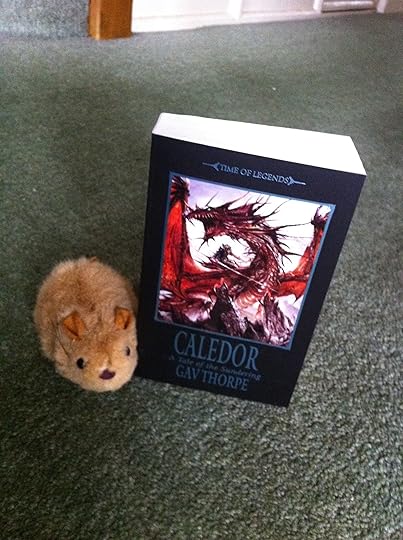
Caledor was available on the day.
After a bit of a break for a coffee, I was whisked back to the main seminar area for the Time of Legends discussion, with New-York-Times-Bestselling-Author-and-David-Gemmell-Legend-Award-Winner Graham McNeill, and series editor (and soon-to-be series author) Nick Kyme. The main upshot of the seminar was that the opening three arcs of the series – Sigmar, The Sundering and Nagash – were coming to an end, and we would be starting out on the next set of stories. As a transition, the Age of Legends anthology will include stories that tie in to the opening arcs as well as tales that pre-empt the next three trilogies. It was a little later on that I found out that editor Christian Dunn wanted me to write a story for this. It wasn't the only commission I found out about on the day, as I will explain later…
In summary, the next sagas to be covered will be The War of Vengeance, the Black Plague and the Wars of the Vampire Counts. The War of Vengeance, between the Elves and Dwarfs (also known as the War of the Beard), had been something I had raised with Nick in previous meetings, but he had already nabbed this one for himself, along with Chris Wraight. I'm sure the two of them will do a fine job. The machinations of the Skaven during the Black Plague will be splendidly handled by CL Werner. For those of you who can't work it out, that means I will be tackling the Vampires and all things associated. To say I was pleased by the very positive response prompted by this news would be an understatement. Since the subject was covered previously by Steve Saville in the Von Carsteins trilogy, I know I will have my work cut out making sure this lives up to expectation, but it's a challenge I am really looking forward to.
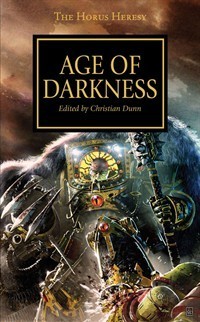
The latest HH anthology.
Lunch and a signing session then whisked me away, until the Horus Heresy seminar. Unsurprisingly, the seminar area was standing room only, and it was with a little trepidation that I took my place on the sofas next to Dan Abnett, Jim Swallow, with re-appearances by Rob, Graham and Aaron. Along with many other pre-releases, Age of Darkness was available on the day, which contains my short story Face of Treachery. It was a bit tricky talking about the novel on which I am currently working – Deliverance Lost - without giving away some of the surprise of the story, since it is in effect a prologue for the novel. Cover artist Neil Roberts also had the Deliverance Lost artwork with him, which I hope BL will be showing off in the not-too-distant future, as it is fantastic.
In some respects we all had to be a little bit vague when discussing what we were up to and what stories were coming next. This phase of the heresy is called the Age of Darkness for a reason, and covers all sorts of exciting events that haven't before been revealed – as well as a couple of the major engagements already described in the background. The series is at a very interesting stage. The majority of the existing history has been covered and we are now moving into uncharted territory. Up to this point, much of the appeal for readers has been finding out the whos and whys behind events they already know, but now that we will be introducing totally new battles, plots and encounters, the emphasis will be shifting, and there are a lot of shocks and surprises in store. This makes it very difficult to discuss an individual volume without spoiling those yet to come.
Also announced was The Primarchs, another anthology, this time of four novella-length pieces. Commissioning by the seat of his pants as ever, Christian again informed me shortly before the seminar that he would like me to contribute. I said yes. The subject is one that a lot of folks have been asking me about, and so I am happy to say that I will be writing a novella based on the Primarch of the Dark Angels, the Lion. I have no idea yet what he'll be up to, but I will endeavour to get at least a handful of revelations in there, and perhaps even an appearance from Astelan…
As has become common at this sort of event, I had as much fun with the editors and authors as I did with the fans; talking about past, current and future projects. I met lots of folks who deserve a shout-out, some of them who I have met before and others I have not. Hello to all of the Boltholers with their lovely T-shirts, it was great to meet you chaps and chapesses. I was very happy to have a chat with RedS8n, Black Library aficionado on many a forum, as well as lots of other folks who I am sure deserve to be mentioned by name.
Jokes about Christian's ambush commissioning aside, it was also good to talk to the BL editors and sales guys about stuff, and though I have a proper scheduling meeting to arrange, I can summarise a big list o' stuff what I will be working on in the coming months and years…
Currently writing: Deliverance Lost for the Horus Heresy.
Coming soon (to my schedule if not the shelves) in no particular order: A Dark Angels novel (possibly the first of a new series); Path of the Outcast; an Eldar-themed short story for the Games Day chapbook; a Vampire Wars trilogy; a Dark Angels audiobook (again, probably the first of several); a story about a space marine tea party; a novella on Lion El'Johnson; a trilogy on the Wars of the Vampire Counts and a Vampire-related short story for the Age of Legends book. I think that covers everything so far…
And of course, I will have to find time to fit in Crown of the Conqueror for Angry Robot too! As a freelance writer, there is no such thing as too busy.








February 4, 2011
What a Tangled Web We Weave
I'm in the middle of fleshing out the synopsis for Deliverance Lost so that I can start writing soon. It is possibly the most complicated single book I've written, for reasons that will become clear when people read it, due to a number of sub-plots and overlapping character threads that need very particular portrayals and timings.
At first I tried my usual method of sitting down at the keyboard with the overview and simply expanding it into a chapter-by-chapter breakdown, but that hurt my head and I couldn't keep everything straight.
I then went back to the drawing board (well, disposable flipchart in my case) and tried employing the process I use when coming up with the initial ideas – scribbling notes and drawing different coloured lines in a form of mindmap. This also failed to bring together all the elements I needed.
So I have fallen back on one of favourite methods touted by many creative writing workshops and websites: plot cards.

No, it's too small to read the details, stop hurting your eyes by even trying!
Each column is one of the various characters involved in this particular wrangle of deception and false identities, and each card represents one of the events that has to occur in order for the story to come to fruition. By putting each event on its own card, and being able to insert new cards to smooth the flow, I was able to bring together the connected but disparate storylines in a very satisfactory way.
All that remains now is to structure those cards through the relevant chapters and I should have a plan!
So today's advice would be to try out all the different techniques available to you as a writer, even if you have an established process or method. There are many ways to order and visualise a creative process, and each has benefits and drawbacks.








February 2, 2011
The End is Nigh
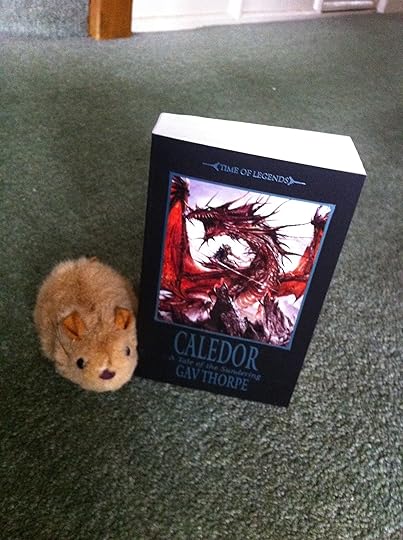
The final installment arrives (in May for you lot)
A parcel dropped through the letterbox this morning, containing an advance sample copy of Caledor. At first this prompted the usual relieved reaction of 'Ahh, it's done' that I get whenever I see a book or story in printed form. This was quickly followed by another sensation, that of slight melancholy. You see, Caledor signals the end of The Sundering series, and with it comes a strange feeling of sadness that my adventures with Malekith, Alith Anar and Caledor are at an end.
When it came to finishing the Last Chancers, it was with a sense of satisfaction – though recently I have started to slightly regret my decision to end things the way I did and have a hankering to get back to some good old-fashioned action with Kage and the Colonel. The same was true of Slaves to Darkness, the feeling of a job done and a story told. With The Sundering, the tale is such an epic one I cannot quite believe it is over. It's only been three books, but they have swallowed me up maybe more than any others I have worked on. Perhaps it is because I know that the story does not really end there; in fact The Sundering is as much of a beginning as an ending. Perhaps it's just because I haven't got my teeth into the next Time of Legends series yet.
There have been sporadic conversations with the editors at Black Library about possibilities to continue the saga, maybe following on the tale into the future, writing one or more Shadow King spin-offs detailing future adventures of Alith Anar, or returning to the series in short story and novella form. Some, none or all of this may ormay not happen in the future, nothing has been decided yet. Maybe I won't ever feel it is complete until I have novelised the entirety of elf history!
In any regard, Caledor marks the end of a mini-era for me, and I hope that readers will enjoy the conclusion as much as I took pleasure from the writing of it.








January 7, 2011
Hello 2011
I'm a bit slow out of the blocks at the moment – perhaps a bit too much turkey and cake over the festive period. I hope you all had lots of nice books from Santa, I certainly did. Unusually, I did not devour the latest Terry Pratchett by the end of Boxing Day (I Shall Wear Midnight) as I was sidetracked by the first of two Derren Brown books I received – Tricks of the Mind. I am currently constructing the foundations of my memory palace and looking forwards to hypnotising you all at my next signing. (I also received Confessions of a Conjuror which I will leave for a bit.) There are some old skool SF novels on the pile too that I have been meaning to get for a while – Aldous Huxley's Brave New World and Ray Bradbury's Farenheit 451. There's also a popular science book – Why Does E=Mc2? - to add to the eclectic mix.
Before you get impressions that I am somehow a highbrow, worthy reader I should add that the final book is Adam Copeland on Edge, a wrestling autobiography… That one will probably travel with me to Amsterdam at the end of the month for some light in-flight reading.
It's an odd start to a year. I've got nothing to write.
That's not strictly true, actually. I have plenty of projects lined up for 2011, I'm just not starting the first one yet. That will be Deliverance Lost, my first full-length Horus Heresy novel. In preperation for writing the synopsis and to get my head around things, I am embarking on a complete read-through of the HH series to date. That includes all the short stories and audiobooks too. I'm taking notes as I go along, on certain characters, plot points, elements of style and background, and sketching out my ideas for Deliverance Lost as they occur to me.
It's an interesting experience. Mostly my research for a new Black Library novel will revolve around brushing up on the various gaming books containing related background – I don't read other BL novels as preparation. I'm intrigued to see how the HH series unfolds back-to-back. It's a bit like the difference between watching a TV series week-by-week and watching it as a DVD boxset, or perhaps reading a collected graphic novel of a comic series. You get a different sense of pacing when you don't have to wait between installments, which sometimes is for the better and sometimes doesn't work as well.
I have some rewrites coming up too. The Crown of the Conqueror for Angry Robot and Path of the Seer, second installment of The Eldar Path are both with the editors at the moment.
Further into the year will be some audiobooks, probably, as well as Path of the Outcast. I've also been talking with BL about my next trilogy for the Time of Legends series. Look out for further announcements, I think it's one that will cause a bit of a stir and no doubt some will feel it a somewhat contraversial choice, but that's all for the better as far as I'm concerned.
One of the best things about being a writer, workwise, is that now and then you get money for old rope! In my case, Grudgebearer is being packaged up with two of Nick Kyme's dwarfs novels in an omnibus edition, along with background material we wrore for the Grudgelore book. It'll be nice to see Grudgebearer available again, bringing bawdy dwarf drinking songs to a new generation… Plus the money always comes in handy.
Before the end of the year I will also have written The Crown of the Usurper, most likely the concluding part of the series, though that's not yet been finalised. My mind is wandering onto what to do next for non-BL writing, so we'll have to see what happens with that.
I'm going to have to be a bit canny with my deadlines this year – with some friends I am heading off to New Zealand in the autumn for the Rugby World Cup, so that will be a big chunk of time (and money!) I have to bear in mind.
As I mentioned earlier I have a signing in Amsterdam at the end of January, plus we have Black Library Live! to look forwards to. There's also talk of double-teaming with Nick Kyme for the Warhammer Doubles tournament to celebrate the release of the Dwarfs omnibus. Come and say hello at any of these if you get the chance.
Enough waffling. Time to read more about Space Marines, Remembrancers and Primarchs…
Happy New Year to all my lovely Hamsterites!
Competition News
I ran a little competition on my Facebook Page just before Christmas, offering the chance to write the dedication in two of my forthcoming books. I really should do random draws or something, I feel ever so guilty and sorry for those that enter and don't win, like I'm judging them. Actually, I am judging them, what am I saying? Anyway, the winners are…
For smart-arsedness I appreciate, Path of the Seer. Marc Collins with: For Marc. If you wish to experience this tale as the Farseer does, turn to the end, read backwards and plan all life accordingly.
And because I can be dumbly sentimental at time, for The Crown of the Conqueror it is Eric Slaney: To Eric's wife Claudia for putting up with all my books.
Special mention goes to my good pal Adam Troke, I'm sure I can slip this in somewhere: Dedicated with love to Adam, because you introduced me, not only to Cryme Tyme, but also the Glamazon!
I'll point out that they are in fact wrestlers, not names of gay nightclubs, just in case you were wondering.
Could the winners please get in touch on the hamster hotline: dennishamster (at) btinternet (dot) com.
Thank you to everyone who took part in the fun, you have been placed on Dennis's naughty list. (Sorry, Dennis doesn't have a nice list, we're all for the chop it seems.)








December 13, 2010
Path Theory
I've been following some online discussions on the Paths of the Eldar and thought I'd take a quick break from Path of the Seer to explain a little of my thinking behind the Eldar Paths and how I have interpreted them for the novels.
The Paths were created to enable the Eldar to narrow their experience of the universe into bitesize chunks, so that they would not be overwhelmed by their heightened psychic and emotional power, as happened before the Fall. To my mind, each Path has two parts: the overt incarnation and the underlying experience the Eldar is learning to cope with. The easiest example is the Path of the Warrior, developed so than an Eldar can cope with aggression, bloodlust, anger and hate in a controlled manner. Thus as theEldar goes through life, they develop coping mechanisms for many of the experiences they will confront, whilst supressing all others.
Thus the overt incarnation of the path – warrior, healer, bonesinger, etc – is not the aim of the Path it is merely a means to create the mental and psychic disciplines required to deal with life as a super-emotive space elf.
This has led to the following Paths so far:
Warrior – Anger, hatred, bloodlust.
Artisan – The creative urge. This includes poets, artists, artesans. I hinted that this is about expression, so that an Eldar on this Path lacks introspection, doing away with the cultures and traditions that bind their society together without any sense of shame.
Service – The desire to help others. Perhaps think of it as the charitable, selfless instinct. Those on the Path of Service engage in any number of activities to help others, including serving them tea in the canteen, keeping the grass cut in the parks, or whatever.
Dreaming – This is an exploration of the subconscious, allowing the Eldar to explore their hidden motivations through the medium of active dreaming.
Awakening – This is an exploration of self (ego and super-ego) which the Eldar can embark upon to better understand their own goals and desires.
Seer – Seer covers many psychic disciplines, and at its hearts is the safe use of the psychic potential within every Eldar.
Explorer – Eldar have a wanderlust, to see the universe and explore distant stars. This is not the same as being outcast (more in a moment) and includes being a ship's crew, steersman, and so on.
Healing – As mentioned in Path of the Warrior this Path enables an Eldar to deal with hope, that is the continual belief that things will turn out for the best. Unbounded optimism for an eldar could be very dangerous indeed.
Mourning – Dealing with matters of grief and loss as an Eldar is also a very serious business, and so to avoid the brain-melting depths of sadness, most control their grief. Those on the Path of Mourning can give vent to the full darkness of loss they can feel.
There are probably others, engineers and scientific endeavour for example, but I'm sure you get the idea. The point is, by progressing along several Paths during their life, the Eldar both perfect a series of useful skills, but more importantly learn how to manage their psyches in a safe fashion.
The Outcast is to eschew this limitation, experiencing the full range of emotions from the heights of happiness to the depths of sadness and everything in the middle. To be an Outcast is to be free from the burden of all of thos mental controls keeping everything check, but also at the mercy of every passing feeling and whim.
To become trapped on a Path is is give in wholly to the underlying emotional cause, rather than the physical representation. An Exarch is trapped in his or her anger. A Bonesinger is trapped in the creative moment. Others may become locked in selfless devotion or grief. The nature of this is that the trapped Eldar cannot see that they are trapped, because they are locked in a cycle of the same emotion without any context or self-awareness. The oddity is the Farseer, who makes a conscious choice to continue to explore their psychic being, knowing full well that this will eventually doom them to a crystalline experience, becoming one with the energy of the infinity circuit. Another exception are the Autarchs, though whether one can be trapped on the Path of Command is a whole canof worms…
Just some food for thought.








December 1, 2010
Dissed by a Bot
What I wouldnt give to have a debate with you about this. You just say so many things that arrive from nowhere that Im pretty sure Id have a fair shot. Your weblog is good visually, I mean people wont be bored. But others who can see past the videos and the layout wont be so impressed together with your generic understanding of this subject.
Hmm. Even the spambots are having a go. You'd think they'd be more polite, wouldn't you? This would have been even funnier if it had been posted on one of my Chaos Space Marine codex articles, but it wasn't. I really should take down all of those glitzy videos and pics though…
In other news, the first sprouts of the season have just arrived in my veg box. It must be Christmas soon!








November 16, 2010
Dark Angels Sighted
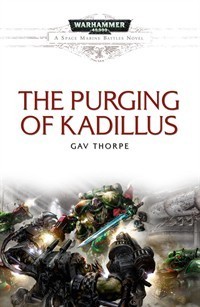
Belial Vs Ghazghkull - who will win?
The lovely postie dropped an unxpected package through the door yesterday – an advance copy of The Purging Of Kadillus. Part of the Space Marine Battles series, The Purging of Kadillus recounts the war first revealed in the Storm of Vengeance campaign pack in the distant history of 2nd edition Warhammer 40,000.
The story revolves around the Dark Angels of the 3rd Company under Master Belial, who face an unexpected Ork invasion whilst recruiting in the Piscina system. These events take place before Angels of Darkness and those who have read that book will find some familiar faces in unfmailiar roles – Kadillus shows the likes of Boreas and Nestor as they were before being left to their own devices… The star is undoubtedly Sergant Naaman of the 10th Company though, and writing his scenes was immensely enjoyable.
Kadillus has given me an ideal opportunity to go back to the Space Marines and present a story that I feel does them justice. The structure is a bit different from the other books in the series (I can't help myself, I just have to mess about with format!). I've taken inspiration from the Band of Brothers tv series and the novel is broken down into separate stories that focus on a single character at a time, while the arc of the narrative links all of them together.
This approach has allowed me to bring in a wide cast of characters and take a good look at Space Marines doing what they do best – kicking alien bottoms and not bothering to take names. We get to live inside the skin of a Chaplain, fix up wounded Space Marines with the Apothecary, see a battle through the eyes of a Commander and go on missions behind enemy lines with the Scouts. It feels… complete. It's a great story for introducing Space Marines to new readers, but adds plenty of depth for those who have been around the Adeptus Astartes block a few times.
After getting my COD: Black Ops fix last week, it's back to Path of the Seer for the next month.









